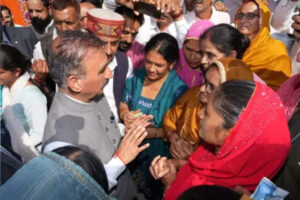
Holistic Capacity Building in Education, ETEducation

Authored By Kavita Sanghvi.
Teachers are changemakers who carry a torch. They have the power to nurture children, help them realise their potential, and elevate their aspirations. On a recent visit to a Model School in Kanner supported, I met several parents who shared that they had studied in the same school their children now attend. They recounted how, years ago, the school had only one classroom where multiple grades were taught simultaneously. Today, the school boasts several classrooms thanks to the passion and dedication of its teachers.These teachers, hailing from the same community, joined the school with a mission to support quality education. Eager to grow, they embraced every opportunity they received to enhance their competencies. Through consistent participation in capacity-building programs, they transformed their teaching strategies and passed on their learning to students. The results were remarkable: the school won numerous government awards, attracting donors who contributed solar panels, clean washrooms, and other amenities. The most transformative outcome was the surge in student enrolment. From a modest two-digit number, the school now serves over 400 students. With growing demand, the school is planning to expand its infrastructure to accommodate more learners. This success story underscores a vital truth: it’s not infrastructure or physical resources that draw students and parents; it’s passionate teachers who go beyond their scope of work. Of course, resources play a crucial role in supporting these educators, ensuring that no child is left behind.Imagine if every school had 4–5 teachers driven to create such dynamic change. How would we envision education for our society then?
At a recent training event, I met a few teachers who shared how they were building their students’ English-speaking skills. They would take local news and put it up on their notice board for children to read, and then run discussions on the news for students to share their perspectives. Through this simple activity conducted every day, they made students communicate in English, had them evaluate local issues and problems and also probe them to arrive at solutions. They even organised in-house MUN programs which enabled students to think critically through diplomatic negotiations. A simple regular act and a community of students are transformed.
Ranjana Shelke, a fourth-grade teacher living with a physical disability, has turned her personal experience of exclusion into a powerful force for inclusion. At Abhyudaya Nagar Municipal Upper Primary School, she creates a warm, participatory classroom where every child, including those with learning difficulties, is seen, supported, and given the tools to thrive. Through storytelling, role-play, group activities, and picture-based learning, her students are not just learning, they’re blossoming into confident communicators. In a remote corner of Pune, at Zilla Parishad Primary School in Ranjhane, Deepak Khavle faces the harsh reality of limited infrastructure and no internet, yet he sees opportunity. Driven to prepare his rural students for a global future, he introduced Communicative English–Future Readiness sessions with lively methods like tongue twisters, vocabulary games, sentence-making, and exchange visits. The results were transformative, once hesitant children now speak English with joy and confidence. And then there’s Bhuvaneshwari Wadnere, a dynamic Science teacher at Shree Saraswati Vidyamandir, who sparks imagination through tech-driven learning. Using the 5E model, coding, and AI tools, she guided her students to build a ‘Smart Home’ project that won an inter-school competition. Her YouTube channel, filled with engaging science content, is helping students dream bigger and bolder. These teachers prove that with heart, innovation, and belief, the classroom becomes a launchpad, not just for academic success, but for life.
In a world hungry for inclusive growth and social equity, these stories reaffirm a powerful truth: leadership doesn’t always wear a suit. When teachers are empowered to lead, their classrooms evolve into incubators of confidence, critical thinking, and change. By investing in their growth, we don’t just elevate educational outcomes, we spark a ripple effect that transforms entire communities. As we look to build a more resilient and just society, let us recognise and amplify these grassroots leaders, the teachers, who are lighting the path forward, one child, one classroom, and one inspired future at a time.
The author Kavita Sanghvi is the Director of Education at Kotak Education Foundation.
DISCLAIMER: The views expressed are solely of the author and ETEDUCATION does not necessarily subscribe to it. ETEDUCATION will not be responsible for any damage caused to any person or organisation directly or indirectly.
Source link



